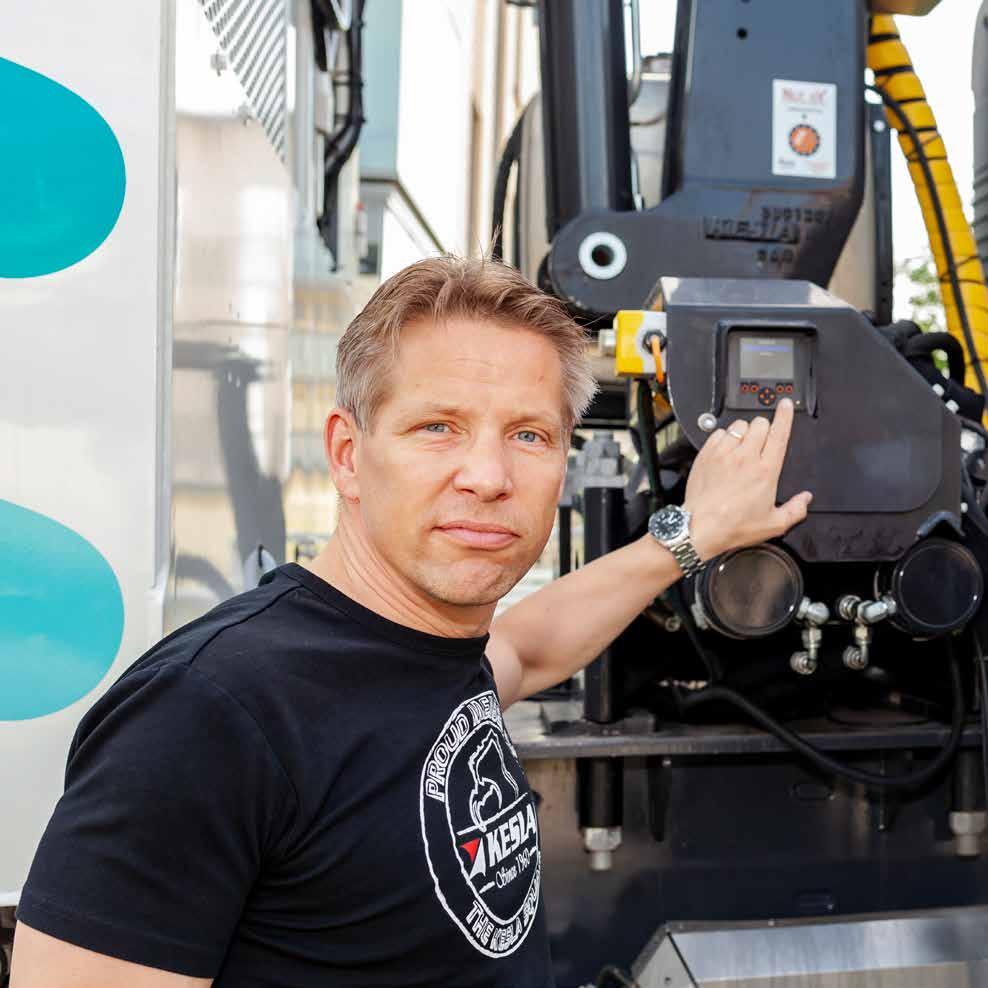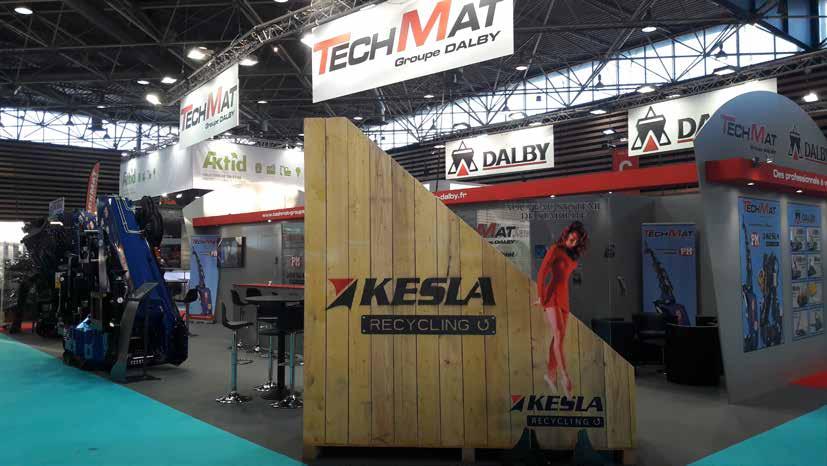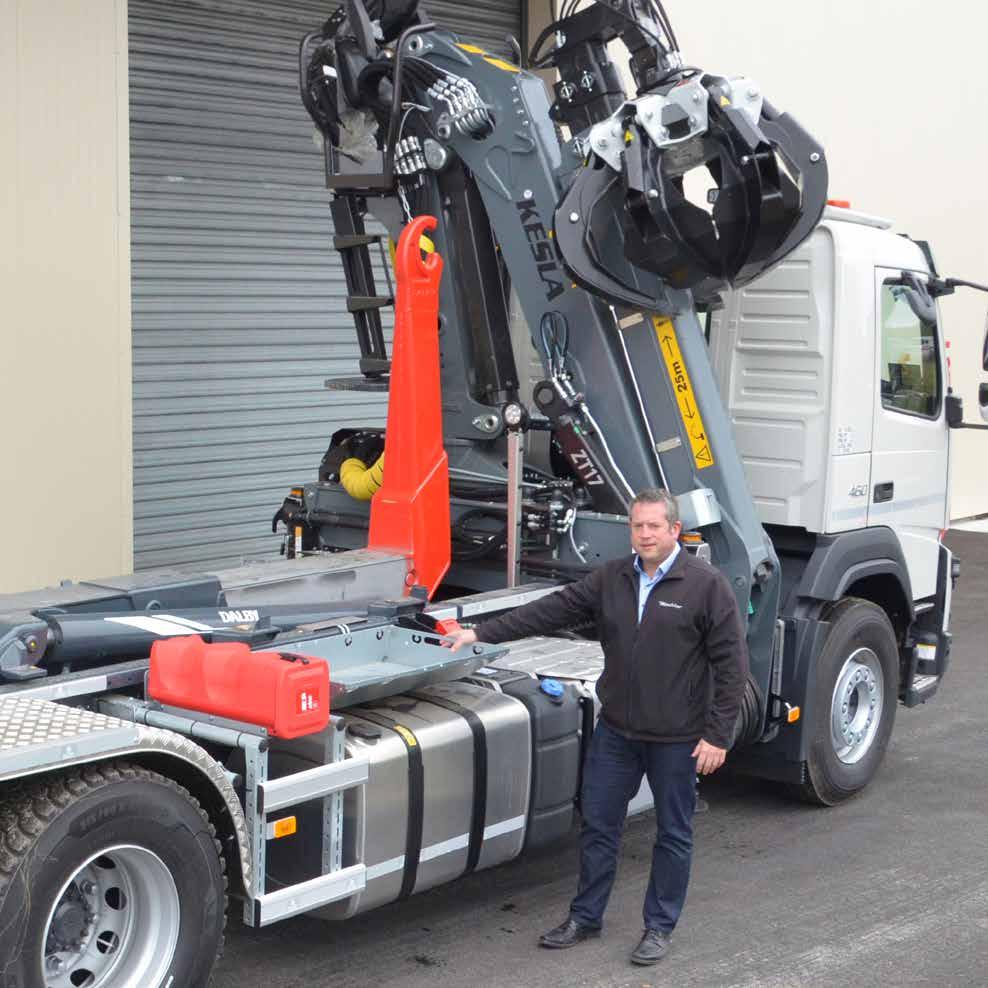
3 minute read
City cranes for heavy users
Toni Lehtinen has been working with City cranes since autumn 2019.
Kesla stepped into the spotlight of the recycling business in Lyon, France, in 2016. A few months earlier, the company had announced a cooperation agreement with the French Dalby Group. Dalby’s new subsidiary TechMat started to sell a customised recycling unit, which included a truck, container, hooklift and Kesla crane.
Dalby designs, manufactures and sells hydraulic hooklifts ranging from 2 tonne-metres to over 30 tonne-metres. In the Finnish Kesla, France’s largest hooklift manufacturer saw a knowledgeable and innovative partner. “Recycling is a big and constantly growing business – a much bigger playing field than moving timber,” says Toni Lehtinen, Business Development Manager of Kesla’s City Crane business.
Lehtinen names three clear target groups for the stability control cranes: glass, metal and paper recyclers, waste collection with large bags and soil distributors:
Stability control in the focus
Toni Lehtinen, who has been working in Kesla’s export operations since 2007, operates in the Western European market. The aim is to further strengthen Kesla’s foothold in the Nordic countries, the Benelux countries, the United Kingdom and, in the future, also in Southern Europe. Growth is now being built by strengthening the dealer network, which speaks the same language as recycling professionals. “Kesla has a good reputation as a manufacturer of strong timber handling cranes. Now we want to build a resale channel that can specifically talk to recyclers and waste processors.” Lehtinen does not emphasise the importance of active communication for nothing. He refers to the EU directive that entered into force in 2011, according to which all cranes with a lifting capacity of more than one tonne used for recycling must be equipped with stability control.

The specialty of City cranes is the stability control system that enables the use of the crane outside forests. The sensors communicate possible problems to the driver via a separate display.
Developed by Kesla
Stability control is a piece of safety equipment whose installation and calibration is a small price for safety. It is a system that ensures that the vehicle cannot tip over during work – no matter what mistake the driver may make. The stability control software was developed at Kesla.
- says Lauri Laukkanen, who has been the Service Manager of Kesla’s City cranes for a long time. Until now, stability control cranes have been operated either by radio control or top seat equipment. In early 2020, a crane with a cabin and stability control also entered the market. Having a cabin is a significant improvement in working conditions, for example, in difficult climate conditions.
“It was naturally new for us and for the French to start working together on such a concept, starting from scratch. Of course, we knew the itself crane well, so we were able to focus on the system and the end product. There have been challenges, but now the product and the range are in order,” says Laukkanen, who has been building the TechMat cooperation almost from the beginning.

The Dalby-TechMat stand at Pollutec 2016, when City cranes were also launched. Originally, the name also included the word ‘recycling’.

The design of the City cranes was inspired by the cooperation with the French company Dalby-TechMat. Pictured: Director Benoît Salgues.










